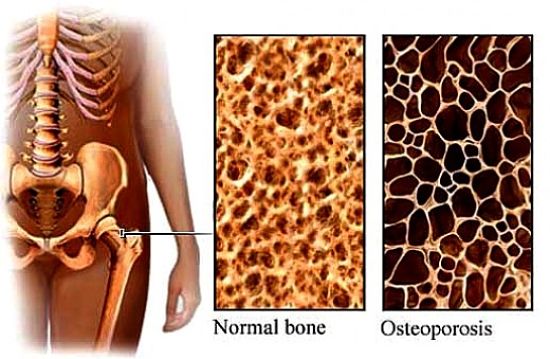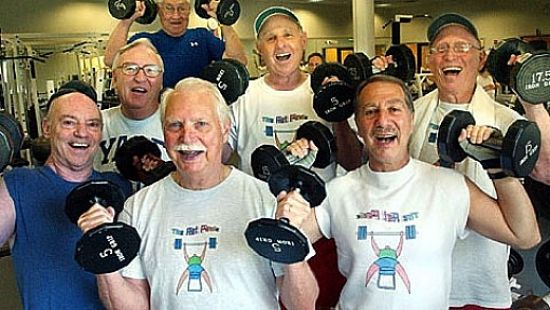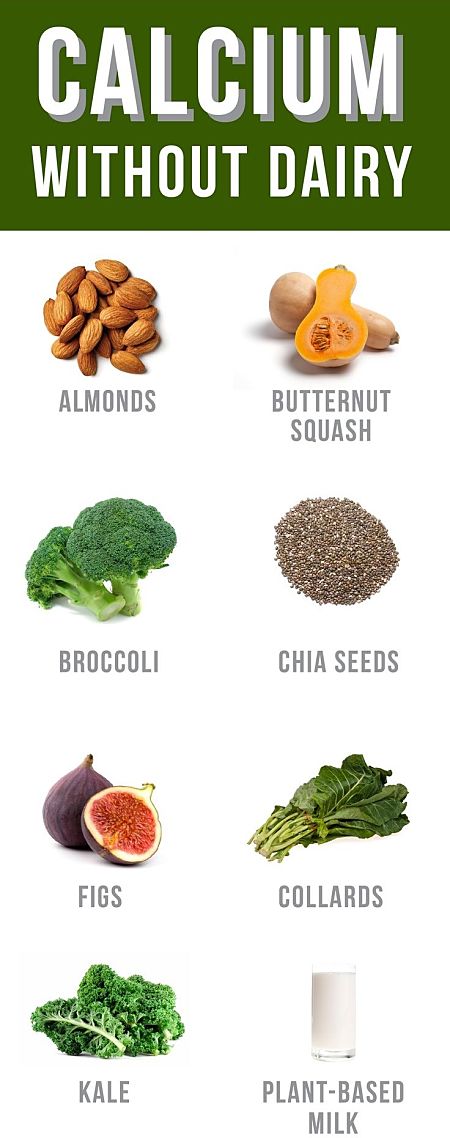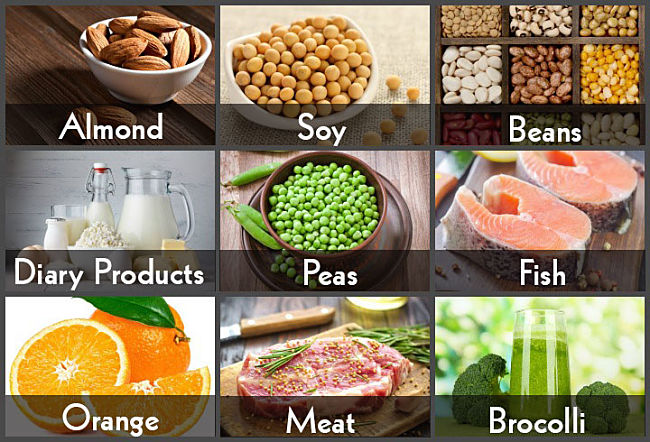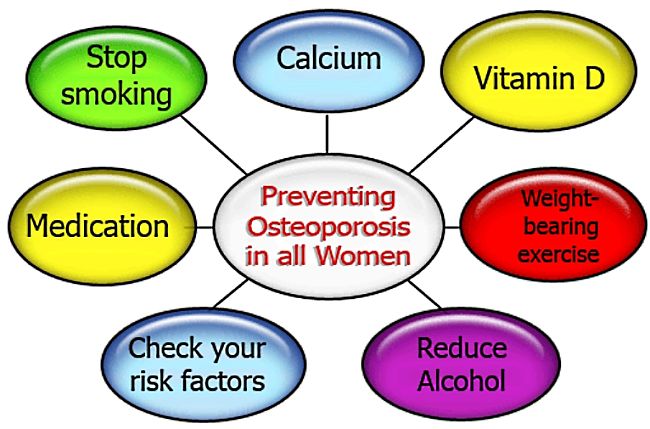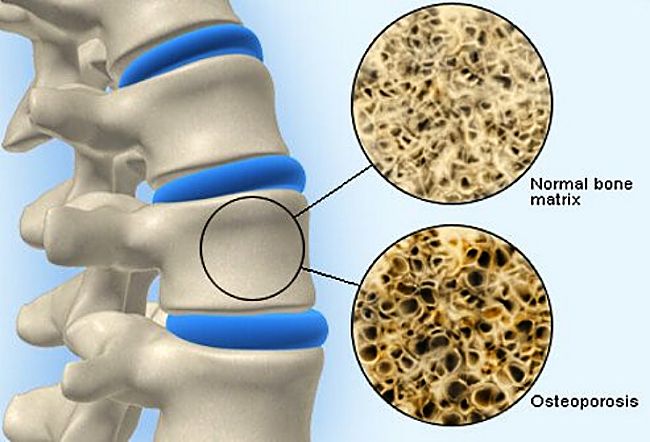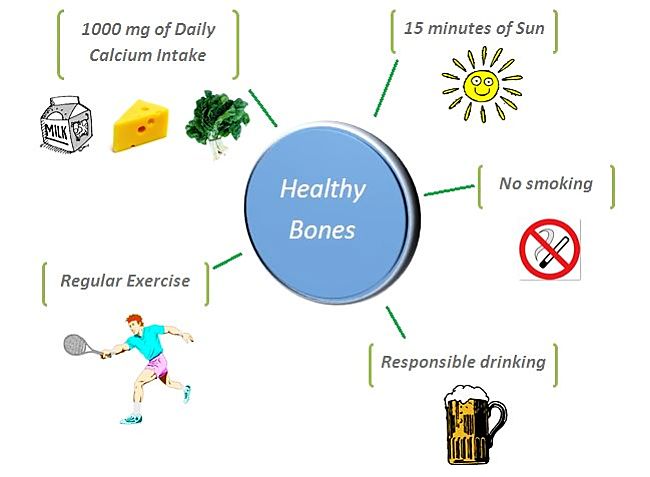Osteoporosis Prevention - Diet and Nutrition Tips for Healthy Bones
Osteoporosis is a common, preventable disease, generally occurring in older people, especially women, that is characterized by the development of fragile and porous bones. It arises because of a loss of calcium that causes the bones to lose their density and strength, making them very susceptible to fractures. Osteoporosis also affects quality of life and life expectancy .Older people are less able to cope with broken bones.
Osteoporosis is often regarded as a disease of the elderly. Many people act too late to prevent it. Research has shown that the loss of bone density and damage from osteoporosis starts much earlier in life well before symptoms develop. The peak in bone density occurs at about 25 years of age, it is important to start preventative measures from that age of 30 or even the mid to late 20s, as the loss of bone density is irreversible and there is no cure.
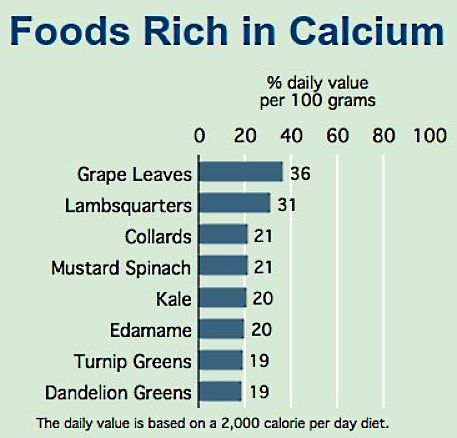
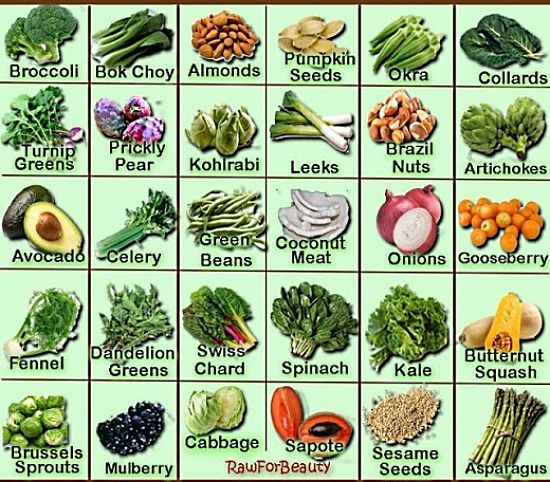
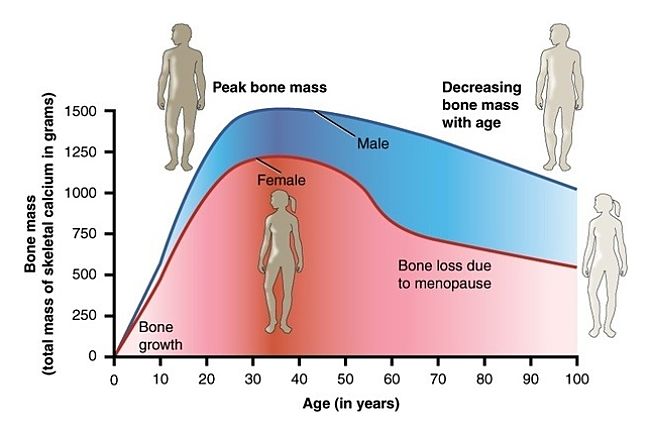
Who Gets Osteoporosis
Worldwide osteoporosis affects about 200 million women - about 67% of women aged 90, 40% of women aged 80, 20% of women aged 70 and 10% of women aged 60. Osteoporosis affects more than 75 million people in USA, Japan and Europe. The incidence of osteoporosis is increasing and by 2050 hip fracture in men is forecast to triple and to double in women. It is estimated that 30% women over the age 50 will have at least one osteoporotic fracture in their lifetime, and 20% of men.
A recent study published in The Medical Journal of Australia shows that about 1.2 million Australians (about 5%) are affected by osteoporosis. Additional 5 million shown symptoms of osteopaenia, which is low bone density precursor to osteoporosis. The ailment incurred a health expenditure in 2004-05 was $304 million and is growing every year.
Osteoporosis takes a huge economic and personal toll throughout the world. In Europe, osteoporosis related disabilities are estimated to be more than that caused by cancers, except lung cancer, and more than other chronic non-communicable diseases, such as asthma, rheumatoid arthritis and blood pressure problems linked heart disease.
Osteoporosis develops when the continuous process of re-absorption of old bone and replacement of new bone becomes imbalanced and the bone density is not properly maintained. The calcium in the body is in a constant state of flux and is vital for proper functioning of the brain, heart and other organs. It there is a calcium deficiency in the blood and organs the body reabsorbs calcium in the bones to maintain calcium levels in the blood. Inadequate calcium intake in food and a number of medical conditions may trigger osteoporosis which may develop very slowly over a number of years. As a result bones may become fragile and brittle and can break easily.
Usually victims of osteoporosis may only become aware of the problem when their bone break. Unfortunately by then, osteoporosis may be well advanced and difficult to manage and treat particularly in the elderly.
Who is at risk?
Women are four times more likely to develop Osteoporosis than men. Apart from inadequate Calcium in food, the other major risk factors are:
For men low levels of testosterone.
For women a lack of oestrogen due to early-onset of menopause (before the age of 45 years) or early hysterectomy; excessive exercising or dieting causing missing periods for a period of six months or more (excluding pregnancy).
For both men and women:
- Use of corticosteroid medications such as for treatment of asthma and arthritis
- Genetic factors with a history of hip fractures or diagnosis of osteoporosis in the immediate family , particularly a mother or father, grandmother or grandfather
- A variety of other medical conditions interfering with bone replacement or the absorption of Calcium from food.
- Lack of exercise or a sedentary lifestyle
- Long term heavy drinking of alcohol
- Smoking
Delaying or Preventing the Onset of Osteoporosis
Although there are various medical treatments for osteoporosis prevention is the best remedy. A healthy lifestyle and an appropriate diet maintained from the age of 30 or before is the best protection against the onset of osteoporosis. Research has shown that regular exercising during the teenage years increases bone density and that this provides a higher starting point. This decreases the risk of osteoporosis in adulthood. Prevention strategies should be started as early as possible to increase their effectiveness.
How can the Risk of Osteoporosis be Reduced via Nutrition and Diet?
Nutritionally, there are a several key steps that people can take to maintain healthy bones and prevent their bones deteriorating as they reach their 40s and 50s, by ensuring an adequate calcium intake, The other major contributing nutrition factors are the levels of vitamin D, magnesium and other micro-nutrients in the diet.
Eat a Calcium-rich diet - Calcium is an essential element that contributes to the strength, growth and density of healthy bones. It must be continually ingested to replace the calcium lost from the body. The bone are not dead and stable, but are living systems that must be continually replaced. When calcium is scare this interferes with bone growth and replacement. A recent study published in The American Journal of Clinical Nutrition suggested that calcium in food is absorbed better than that provided in various pills and supplements. The daily recommended intake for calcium is 1000 milligrams a day. Good sources of Calcium in food are:
- skim milk (or other milk products with high calcium)
- tofu;
- tempeh;
- natural low-fat yogurt with wild cultures
- bony fish - for example: herring, sardines and canned tuna and wild salmon
- green vegetables such as broccoli, Brussels sprouts, bok choi, beans and watercress;
- seeds;
- nuts;
- oysters
- seaweed.
Eating quality protein - Protein tends to stimulates the generation of a growth factor. This natural hormone is responsible for maintaining muscle and bone condition and strength, both of which tends to decline as we get older. The recommended daily intake of protein is about 0.74 grams per kilo of body weight for women and 0.83 grams of protein for men. The best protein sources to maintain strong bones are low-fat meats (pasture-raised ), fish, beans, seeds, poultry, eggs, low-fat dairy and soy products. Home-made protein shakes are also an excellent source of protein
Get enough vitamin D - Vitamin D acts to the body absorb calcium from food.The best natural sources of vitamin D are eggs, fortified milk,oily fish such as herring, sardines and salmon and fish oils. Sunlight is also a wonderful natural great source of vitamin D and that is generated beneath the skin. There is a lot of disagreement about how sunscreens may be affecting vitamin D levels and leading to rickets and there vitamin D deficiencies, particularly in dark skinned people
Get regular moderate exercise - Weight-bearing exercises and gym training help to maintain strong, healthy bones in older people. About 30 minutes of weight training or its equivalent each day helps to stimulate your bones to keep them rebuilding and maintaining density.
What are the Causes of Low Absorption of Calcium from Food
Factors causing low absorption of calcium from food could be a lack of vitamin D and phylates and oxalates that are contained whole grains, rhubarb, spinach and coffee.
